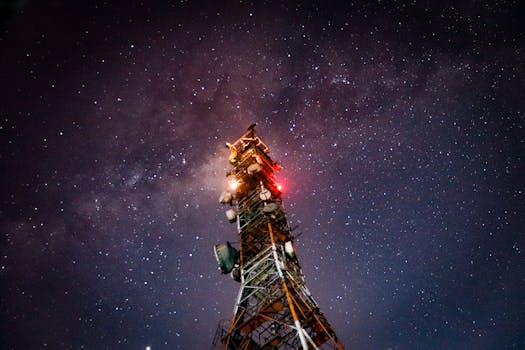
MEO Satellites: Introduction to Medium Earth Orbit Technology
MEO satellites, or Medium Earth Orbit satellites, are a type of satellite that operates in an orbit between 2,000 and 36,000 kilometers above the Earth’s surface. This orbit is higher than Low Earth Orbit (LEO) satellites but lower than Geostationary Orbit (GEO) satellites. MEO satellites are designed to provide a balance between the benefits of LEO and GEO satellites, offering faster and more reliable connections than traditional GEO satellites.
The focus keyword for this article is MEO satellites, and we will explore the benefits and applications of this technology in detail. MEO satellites have gained popularity in recent years due to their ability to provide high-speed and low-latency connections, making them ideal for a wide range of applications, including satellite communication, navigation, and remote sensing.
Benefits of MEO Satellites
MEO satellites offer several benefits over traditional GEO satellites. One of the primary advantages is their lower latency, which enables faster communication and data transfer. MEO satellites have a latency of around 20-30 milliseconds, compared to GEO satellites, which can have a latency of up to 250 milliseconds. This makes MEO satellites ideal for applications that require real-time communication, such as video conferencing, online gaming, and financial transactions.
Another benefit of MEO satellites is their wider coverage area. MEO satellites can cover a larger area than LEO satellites, making them ideal for applications that require global coverage. Additionally, MEO satellites are less prone to interference from other satellites and terrestrial systems, providing a more reliable connection.
Applications of MEO Satellites
MEO satellites have a wide range of applications, including satellite communication, navigation, and remote sensing. In the field of satellite communication, MEO satellites are used to provide high-speed internet access, voice and data services, and broadcast services. They are also used in the navigation sector to provide location information and timing signals.
In the field of remote sensing, MEO satellites are used to collect data on the Earth’s surface, including weather patterns, ocean currents, and land use. They are also used in the field of earth observation to monitor the environment, track climate change, and predict natural disasters.
Future of MEO Satellites
The future of MEO satellites looks promising, with several new constellations and systems being developed. One of the most significant developments is the launch of the O3b constellation, which provides high-speed internet access to remote and underserved communities. Other constellations, such as the Amazon Kuiper System and the OneWeb constellation, are also being developed to provide global coverage and high-speed connections.
In conclusion, MEO satellites are revolutionizing the way we communicate globally, offering faster and more reliable connections than traditional GEO satellites. With their lower latency, wider coverage area, and increased reliability, MEO satellites are ideal for a wide range of applications, including satellite communication, navigation, and remote sensing. As the demand for high-speed and low-latency connections continues to grow, the future of MEO satellites looks bright, with several new constellations and systems being developed to meet this demand.
